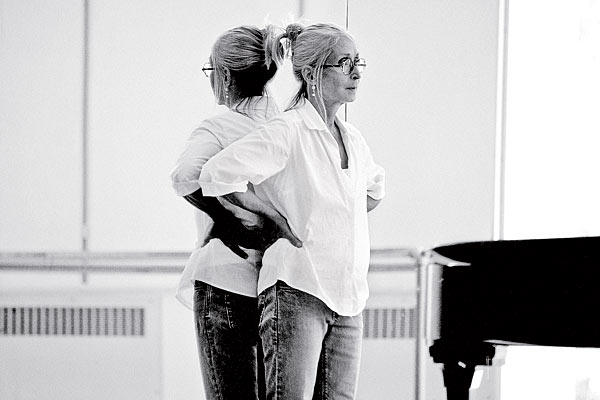
Twyla Tharp is a force majeure—a dance artist with box-office draw who can metamorphose a ballet company (ABT, the Paris Opera Ballet) or a Broadway cast (Movin’ Out). In October, the Indiana-born choreographer premieres a new work with Hubbard Street Dance Chicago. We caught up with her between rehearsals in the West Loop.
Few people probably realize that, in 1973, your professional debut as a choreographer happened in Chicago with the Joffrey.
I will always be sentimental about Chicago because of Deuce Coupe at the Auditorium, which was my first professional gig—Helloooo? What did I know? I’m not sure that it could have come to pass anyplace else. First of all, Joffrey was grounded here. Second, the community is fairly clearheaded about what it thinks. I had the opportunity to do a massive rewrite before it went up at City Center in New York. That was very helpful to a young person who had never done a ballet before.
How have you modernized your movements since then?
[Tharp jumps out of her chair and silently demonstrates a basic ballet barre sequence.] I do it differently every decade. It comes from the inside.
As your body changes and you grow older [Tharp is 70]—
It’s ugly. Very ugly. I think about Matisse. In his 70s, he was bedridden, and that’s when he did the cutouts. He figured out a way to work flat on his back that delivered some amazing imagery. That’s the challenge.
Choreography is still a male-dominated art. Do you feel a gender bias?
I try not to. I would have preferred to be a film director, but no women were directing films in the 1960s. However, in the world of modern dance, Martha Graham, Isadora Duncan, Ruth St. Denis—all of these women had had substantial careers. I thought, I can go into this career on an even playing field. Now the reality is that in the 20th century I have made more ballets than any other woman. Count them up. I think that it has not ultimately made much difference in terms of making the playing field more level. I think I survived.
You still make full-length Broadway shows, which is incredibly risky artistically. What keeps you going?
Curiosity.
Why not just work with dance companies?
Do you know what the budget of a Broadway show is? It’s over $10 million. In terms of production, lighting, costumes, scenic components—it makes a big difference. The lighting package alone for Movin’ Out was almost $2 million. You can learn a lot from that. It’s a different world. You can’t go into one world asking for what you can find in the other. You cannot go into the Broadway world asking for heart. And you cannot go into the not-for-profit world asking for a million-dollar lighting package.
GO Hubbard Street Dance Chicago performs Oct. 13–16 at the Harris Theater. 312-850-9744, hubbardstreetdance.com
Photograph: Marc Von Borstel


